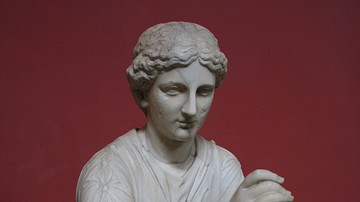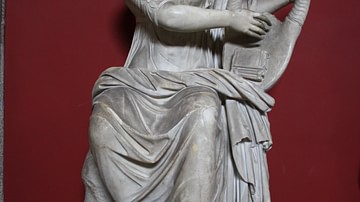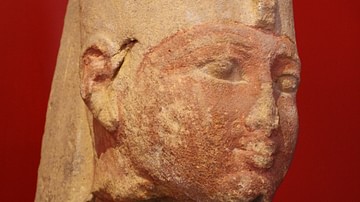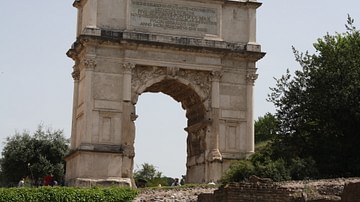Search Images
Browse Content (p. 1709)

Image
Erato
A 1st century CE Roman sculpture of Erato, the Muse of lyric poetry, playing the lyre. (Vatican Museums, Rome).

Image
Calliope
A Roman 2nd century CE sculpture of Calliope, the Muse of epic poetry. The sculpture is a copy of a 2nd century BCE Hellenistic sculpture which was itself a copy of a 4th century BCE Greek original. (Vatican Museums, Rome).

Image
Terpsichore
A Roman sculpture of Terpsichore, the Muse of Dance, playing a lyre, 1st century CE. (Vatican Museums, Rome).

Image
Mentuhotep II Head
Limestone head of Egyptian pharaoh Mentuhotep II, 11th Dynasty 2061-2010 BCE. The head comes from a column of the mortuary temple Deir el-Bahari at Thebes West. Mentuhotep II was the Theban king who ruled for half a century and reunified...

Image
Inscription, Arch of Titus
The inscription from the Triumphal Arch of Titus, erected in the Roman Forum in c. 81 CE by Domitian to commemorate his brother Titus' campaigns in the Jewish War (70-71 CE). It reads: The Senate and People of Rome, to Divus Titus, son of...

Image
Victories, Arch of Titus
A detail from the Triumphal Arch of Titus, erected in c. 81 CE by Domitian to commemorate his brother Titus' campaigns in the Jewish War (70-71 CE). The top frieze is a victory procession whilst below two winged Victories stand on a globe...

Image
Temple of Solomon Treasure, Arch of Titus
A panel from the Triumphal Arch of Titus, erected in c. 81 CE by Domitian to commemorate his brother Titus' campaigns in the Jewish War (70-71 CE). The relief shows the victory procession carrying booty from the Second Temple of Jerusalem...

Image
Chariot Panel, Arch of Titus
A panel from the Triumphal Arch of Titus, erected in c. 81 CE by Domitian to commemorate his brother Titus' campaigns in the Jewish War (70-71 CE). The relief shows Titus riding a chariot and being crowned by Victory. Forum Romanum, Rome.

Image
Inner Archway, Arch of Titus
The coffered vault or intrados of the Triumphal Arch of Titus, erected in c. 81 CE by Domitian to commemorate his brother Titus' campaigns in the Jewish War (70-71 CE). The central figure is the deified Titus. Forum Romanum, Rome.

Image
Arch of Titus, Rome
The Triumphal Arch of Titus, erected in c. 81 CE by Domitian to commemorate his brother Titus' campaigns in the Jewish War (70-71 CE). Forum Romanum, Rome.